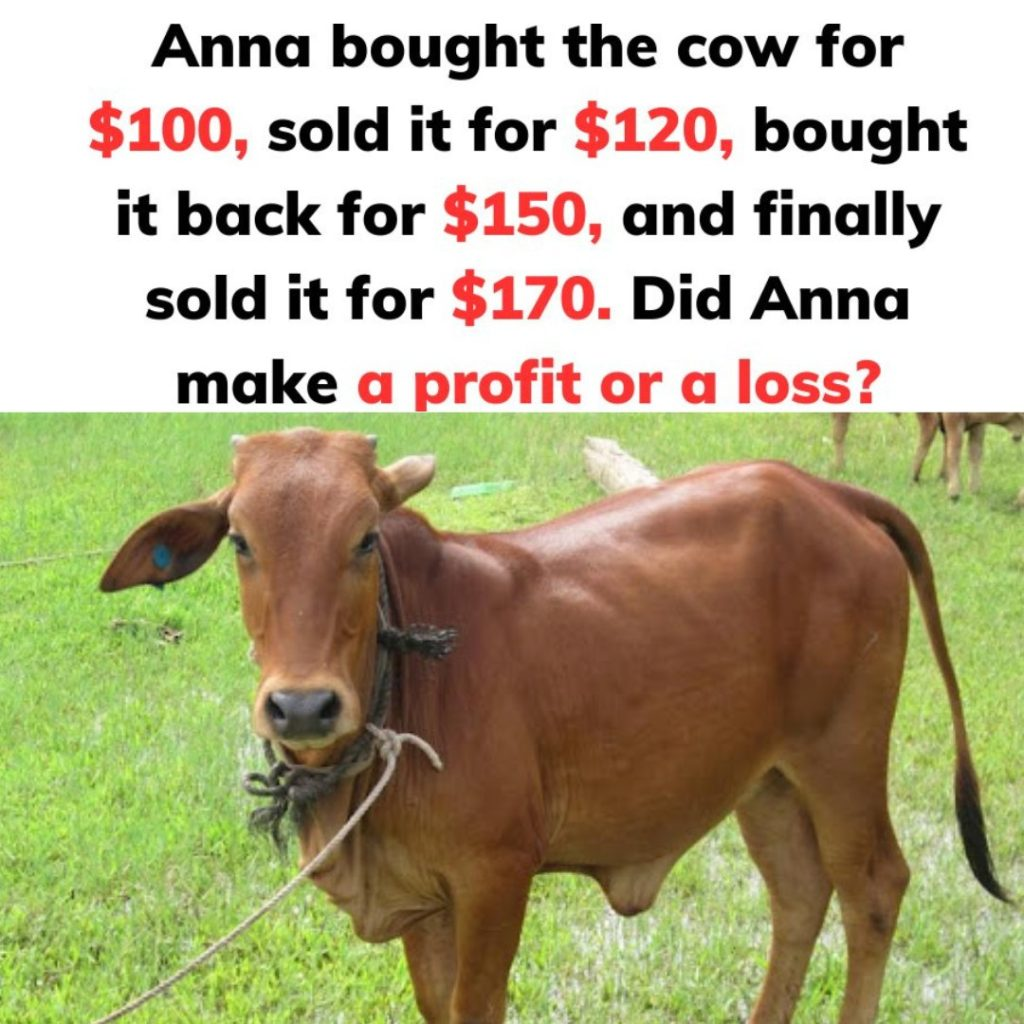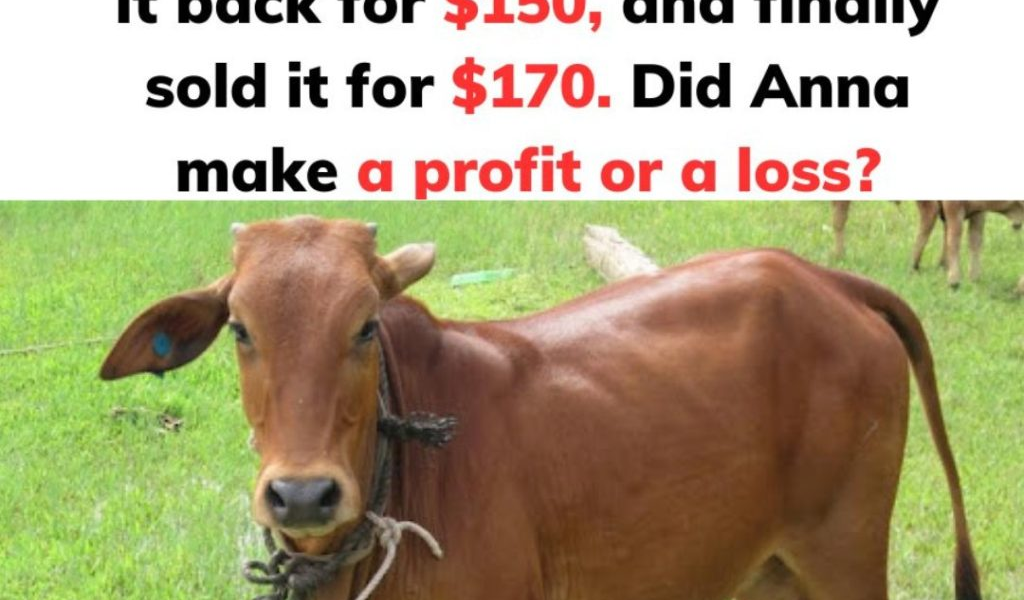Puzzles like this one are designed to make you think, challenge your assumptions, and test your problem-solving skills. If you’re reading this, you’re probably curious to find out if Anna, who buys and sells a cow multiple times, made a profit or faced a loss. Let’s break down this tricky scenario, step by step, and see what the numbers reveal.
Understanding the Puzzle: Anna’s Cow Transactions

The puzzle begins with Anna buying a cow, selling it, buying it back, and then selling it again. It sounds straightforward, but the sequence of transactions often misleads people. The challenge is to determine whether Anna ends up with a profit, a loss, or simply breaks even.
Before jumping to any conclusions, let’s go through each transaction in detail and keep track of Anna’s total balance.
Common Mistakes in Solving the Puzzle
People often make mistakes when trying to solve this type of puzzle. Here are some of the common errors that can lead to incorrect conclusions:
- Ignoring Net Gain or Loss: Many people focus only on the total sales or total amount spent, failing to consider each transaction’s impact on the net balance.
- Misinterpreting the Sequence of Transactions: Since Anna buys and sells twice, missing a step or not considering the order can distort the final outcome.
- Confusing Revenue with Profit: Just because Anna received more money in one transaction doesn’t necessarily mean she made a profit overall.
Now that we’ve outlined the potential pitfalls, let’s proceed to analyze Anna’s transactions step by step.
Step-by-Step Solution: Calculating Anna’s Profit or Loss
Step 1: Initial Purchase
Anna starts by buying the cow for $100. This is her first expense, meaning she’s immediately down by $100.
- Calculation: -$100 (initial purchase)
- Total Balance: -$100
Step 2: First Sale
Next, Anna sells the cow for $120. This sale brings in revenue and creates a profit relative to her initial purchase.
- Calculation: +$120 (revenue) – $100 (initial cost) = +$20 profit
- Total Balance: +$20
At this point, Anna has a net profit of $20. But the puzzle isn’t over yet—she still has more transactions to complete.
Step 3: Buying the Cow Back
Anna then buys the cow back for $150. This is another expense that reduces her total balance.
- Calculation: -$150 (buying back the cow)
- Total Balance: +$20 (previous balance) – $150 = -$130
Now, Anna has a loss of $130 after buying the cow back, making this a crucial step in understanding her overall financial outcome.
Step 4: Final Sale
Finally, Anna sells the cow again, this time for $170. This transaction adds more revenue to her balance.
- Calculation: +$170 (final sale)
- Total Balance: -$130 (previous balance) + $170 = +$40
By the end of the last transaction, Anna’s total balance shows a profit of $40.
Conclusion: Anna Made a Profit of $40

The puzzle reveals that Anna did indeed make a profit, and it amounts to $40. Despite the complexity of the back-and-forth transactions, her overall financial position improved by the end of the series.
Why This Puzzle Stumps So Many People
This seemingly simple problem confuses many because of how easy it is to overlook the net balance at each step. It’s tempting to focus only on individual gains or losses without considering the cumulative effect of the transactions. Additionally, the fact that Anna buys and sells the same item twice adds to the confusion.
The lesson here? Always analyze each transaction individually and maintain a running total to get a clear picture of profit or loss.
The Importance of Step-by-Step Analysis in Problem-Solving
Puzzles like this one serve as a reminder of the value of methodical analysis. They teach us to break down complex problems into manageable steps, ensuring that no detail is overlooked. Whether in financial decisions or everyday problem-solving, the ability to focus on each step individually helps avoid errors and achieve accurate results.
Sharpening Your Logic with Puzzles
If you found this puzzle intriguing, you’re not alone! Puzzles like this one are popular tools for developing logical thinking and problem-solving skills. They encourage a mindset of careful analysis, strategic thinking, and patience. The more you practice, the sharper your problem-solving abilities become.
- Try More Puzzles: Engaging regularly with similar challenges can enhance mental agility and improve your analytical skills.
- Discuss Your Solutions: Sharing your approach with others can offer new insights and perspectives on solving tricky scenarios.
- Challenge Yourself: Keep seeking puzzles that push your boundaries—it’s a fun way to stay mentally fit.
Final Thoughts: Did You Solve It Correctly?
If you enjoyed unraveling this puzzle, share your answer and thought process below. Did you expect Anna to make a profit, break even, or end up with a loss? The beauty of puzzles like this one is that they offer more than just a solution—they invite deeper exploration of logic and strategy.
So, next time you encounter a tricky situation, remember to break it down step by step, just like Anna’s transactions with the cow. You might just find that the answer is clearer than it first appeared!



